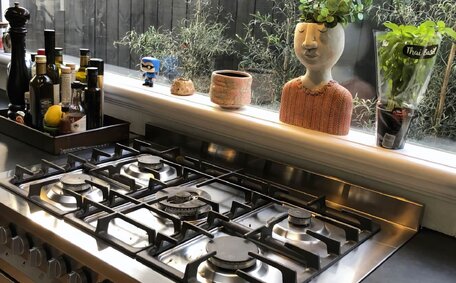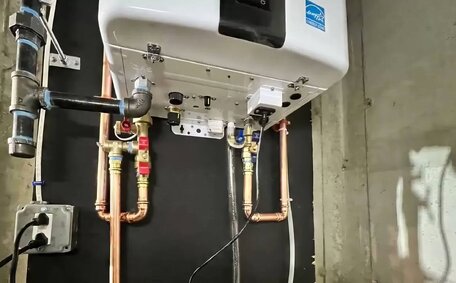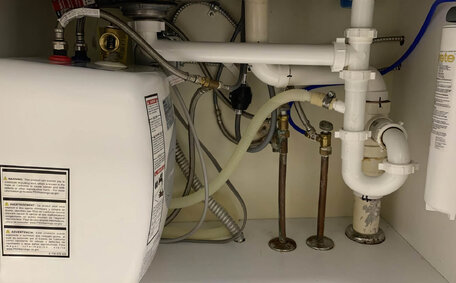Introduction to Cast Iron Pipes: History and Prevalence
Cast iron pipes have been used in homes for over a century. They were a very popular choice for plumbing and sewer lines in homes built before the 1970s.
The durability and longevity of cast iron pipes are what made them so prevalent - they have an expected lifespan of up to 100 years under normal conditions.
However, over time cast iron is susceptible to corrosion and rust when exposed to certain soils, sediments or moisture. This can lead to leaks, blockages, cracks and premature deterioration of the pipes, sometimes in as little as 25-30 years.
If your home was built prior to the 1970s, there’s a good chance you have cast iron drain lines under your home and property that may be aged and corroded.
Why Do Cast Iron Pipes Deteriorate Prematurely?
p>p>p>p>p>p>
Problems Caused By Deteriorating Cast Iron Pipes
Deteriorating cast iron pipes can cause a number of issues that may disrupt your home and daily life. Here are some of the most common problems caused by corrosion in old cast iron drains and sewers:
- Slow or blocked drains - Rust buildup and mineral deposits inside the pipe can obstruct water flow, leading to gurgling sounds, backed up sinks/tubs, and slow drainage.
- Sewage backups - Cracks, holes and pipe collapses can allow sewage to back up into your home, flooding bathrooms or basements with raw sewage.
- Bad odours - If the pipe interior corrodes, it provides a perfect environment for sewer gases and foul odours to emit into your home.
- Water leaks - Cracks and holes in your cast iron pipes can lead to water leaks, flooding, property damage, and excess water bills.
- Foundational damage - Leaks from underground cast iron pipes can erode and destabilise the soil beneath your home’s foundation.
- Expensive repairs - Depending on severity, pipe repairs/replacement can cost thousands of dollars if extensive digging/excavation is required.
Many homeowners become aware of drain deterioration when they start experiencing slowed drains, gurgling sounds from pipes, bad smells, damp spots on walls/floors, or outright flooding. If you suspect your cast iron drain lines may be failing, contact a professional plumber right away.
An Overview of Cast Iron Pipe Relining
Pipe relining is an alternative repair method that can extend the lifespan of ageing or damaged cast iron pipes. This trenchless method involves inserting a liner impregnated with epoxy resin into the existing pipe.
The liner, usually made of fibreglass or a felt material, is saturated with a self-hardening epoxy. Once inserted, the liner material adheres to the inside of the pipe, essentially creating a 'pipe within a pipe’ once the epoxy cures and hardens.
Pipe relining offers several benefits compared to traditional pipe replacement:
- Less invasive - Requires no digging or destruction to floors, walls or landscaping.
- Faster repairs - Can be completed in hours or days rather than weeks.
- Reduced costs - Pipe relining costs a fraction of full pipe replacement.
- Prevents future damage - Restores integrity and prevents further corrosion or leaks.
Overall, cast iron pipe relining is an excellent solution for restoring your ageing pipes without major renovation or replacement costs.
The Process of Relining Cast Iron Pipes
Relining cast iron pipes involves several key steps performed by professional plumbers:
- Inspection - The plumber will assess the cast iron sewer using a pipe camera to determine if relining is suitable. Measurements are taken to custom-fit the new liner.
- Cleaning & Repairs - The old pipe is thoroughly cleaned with high-pressure water jets. Any obstructions, roots, or broken sections are repaired.
- Liner Installation - The epoxy-coated liner is inserted through an access point and fed through the entire sewer length.
- Curing - Once in place, the liner material is inflated and the epoxy is cured, either with steam or UV light. This bonds it to the old cast iron.
- Reinstatement - Access points are resealed, restored and any excavations are refilled. The sewer is now renewed.
The relining process usually takes 1-2 days with minimal excavation required. Your household plumbing can still be used during the repairs. When complete, your restored sewer will last for decades without leaks, infiltration or corrosion.
Advantages of Cast Iron Pipe Relining
Relining your home’s cast iron pipes and sewers offers many benefits compared to full replacement:
- Less disruptive - The relining process requires minimal excavation and no destruction to walls, floors or landscaping.
- Faster repairs - Iron pipe lining can usually be completed in 1-2 days rather than the weeks or months for pipe replacement.
- Significant cost savings - Pipe relining costs a fraction of complete drain line replacement.
- Long-lasting - The epoxy-coated liner can extend the life of your pipes by 50 years or more.
- Prevents future damage - The liner stops further corrosion, leaks, infiltrations, root intrusions.
- Maintains flow - The smooth new interior improves wastewater flow and reduces blockages.
- Reduces odours - The leak-proof liner prevents sewer gases from entering your home.
- No disruption to plumbing - Your home’s plumbing system can remain in use during the relining process.
Overall, relining provides the benefits of new pipes at a lower cost, with less mess and disruption to your home or property. Contact a professional plumber to see if your cast iron pipes qualify for this trenchless renewal process.
When to Choose Pipe Relining Over Replacement
There are a few key factors that help determine if cast iron pipe relining is the best choice over full replacement:
- Extent of damage - If the cast iron pipes have moderate corrosion or isolated damage spots, relining can restore their integrity. But severely corroded pipes may need replacing.
- Location - Relining causes little destruction to walls, floors and landscaping. So it’s ideal for pipes under or near the home’s foundation.
- Pipe size - Relining works for pipes of 3-12 inches in diameter. Larger pipes often require replacement.
- Home renovations - If you’re remodelling part of your home, replacement may better coincide with the construction.
- Cost - Relining on average costs $2,000-6,000 while replacement can cost $8,000-15,000. Significant savings can be achieved by relining.
Overall, relining is an optimal solution when your cast iron pipes need moderate repairs without the mess and costs of full replacement. Contact a professional plumber for an inspection and to discuss whether relining or replacement is your best option.
How to Choose a Reputable Pipe Relining Company
When it’s time to reline your home’s old cast iron pipes, it’s important to choose an experienced company that will get the job done right. Here are a few tips for selecting a reputable pipe relining company:
- Look for an established company that has been in business for several years. An experienced company will have refined their relining techniques and know how to handle any challenges.
- Make sure the company has licenced, insured, and bonded plumbers on staff. You want to ensure they are professionals who are vetted and qualified to provide pipe relining services.
- Ask about the materials and epoxy resins they use. Quality materials from reputable brands will provide a long-lasting pipe lining repair.
- Find out if they offer any warranties or guarantees on their pipe relining work. Many companies offer multi-year warranties on completed jobs.
- Request and check references from past customers. Reach out to a few previous clients to ask if they were satisfied with the company’s work.
- Look for CIPP industry certifications like NASSCO (National Association of Sewer Service Companies). This indicates a higher level of training and expertise in trenchless pipe lining.
- Choose a company that will provide you with a full inspection and repair recommendation. They should thoroughly assess your pipes before recommending relining.
At Strathfield Plumbing, our team of licenced plumbers have 15+ years experience successfully renewing pipes across Sydney with minimal fuss and using top-quality materials and methods. Get in touch for a prompt inspection and no-obligation quote on rehabilitating your old cast iron drains through pipe relining.
Conclusion: Cast Iron Pipe Relining for a Durable, Cost-Effective Solution
As cast iron pipes continue to age past their design life, pipe relining offers a proven and cost-effective alternative to full replacement. By inserting an epoxy-coated liner into your existing pipes, relining can restore structural stability, prevent future corrosion and leaks, and extend the life of your plumbing system for decades.
Pipe relining causes minimal destruction to your home or property compared to traditional replacement methods. The process can usually be completed quickly in just 1-2 days. And it costs a fraction of what a full pipe replacement would run.
If your home has old cast iron drain lines that are showing signs of wear, corrosion and blockages, pipe relining is an excellent option to consider. Contact the professional team at Strathfield Plumbing to schedule a pipe inspection and receive a detailed proposal on renewing your pipes. With over 15 years of plumbing expertise, we use industry-leading methods and materials to provide long-lasting pipe repairs.
Get in touch today to learn more.






